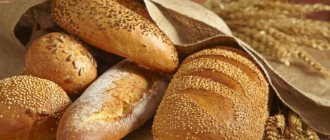Many people, especially those who want to lose weight, count the calories they eat per day, but not everyone knows what they are. Calories are energy that enters the human body with food, especially a lot of it in carbohydrates, as well as fats and proteins. The body processes food, releasing energy, which a person spends on life activities or puts it in “bins” as a reserve.
Calorie content is the energy value of food, how much energy it can provide after its processing. Don’t think that a calorie is an indicator of completeness. Until the beginning of the 20th century, this unit meant the amount of thermal energy. In the modern world, it is used to measure the energy value of food. Next, we will consider the questions of what calories are and how they differ from kilocalories.
What is the difference
Those who monitor body weight and count kcal do not really think about what this means. The reduction in calories is carried out actively, without particularly going into where it came from and where it went.
And most importantly, without thinking about it: calories and kilocalories - what is the difference between them:
- The calorie content of the product is always indicated on the packaging in kilocalories. If it says “N kcal”, you can’t believe it, all products have a calorie content, even the smallest one, and this sign is the ignorance of the manufacturer.
- To be clear, how many calories are in a kilocalorie? 1 kcal = 1000 calories.
- Exercise equipment in the gym often displays incorrect information about the calories burned on it. The measurement is made in kilocalories.
It must be remembered that products with zero or negative kcal do not exist in nature, no matter how their manufacturers claim in their advertisements.
Video
What do you mean by calories in food and exercise?
Let’s define the concept of “calorie” in nutrition and energy expenditure during physical exercise.
Calories measure energy reserves and expenditure. The calories reported in diets (calories in) and exercise (calories out) are actually kilocalories (kcal). One kilocalorie is equal to the amount of heat required to heat 1 kg of water by 1°C at an altitude equal to sea level. Its equivalent is also 4,186.8 joules or 1000 calories (small calories) which is used in scientific laboratories to denote thermal energy.
Why does the body need kcal?
Energy is required for normal human functioning. To move, breathe, circulate blood through the vessels, and even rest. Energy enters the body from the outside, with food. How much a person eats, so much energy will be generated.
How many kilocalories are contained in one gram of food components:
- carbohydrates – 4 kcal;
- proteins – 4 kcal;
- fats – 9 kcal.
Human food consists of these ingredients. Knowing the weight of the product in a dish, you can easily calculate the calories received from food.
The most popular breakfast is oatmeal. In 100 g there will be so many calories:
- Fat 6 g * 9 kcal = 54 kcal.
- Protein 12 g * 4 kcal = 48 kcal.
- Carbohydrates 51 g * 4 kcal = 204 kcal.
It turns out that 100 g of oatmeal contains 306 kcal. Metabolism will dispose of the received energy as follows: proteins will be converted into amino acids, carbohydrates into glucose and other simple sugars, and fats will be converted into glycerol and fatty acids required by our body.
Video
Where does the discrepancy come from?
And yet, the huge number of calorie reference books sometimes leads to confusion: the numbers turn out to be different. Why is this happening?
“American, European, Asian, Russian data on the calorie content of products may vary,” says Minkail Gapparov, corresponding member of the Russian Academy of Medical Sciences, deputy director for scientific work of the State Research Institute of Nutrition of the Russian Academy of Medical Sciences . — The content of proteins, fats, carbohydrates in products will fluctuate depending on climate, soil, varieties, species, etc. Moreover, agriculture tends to follow the path of intensification, and therefore potatoes, for example, a hundred years ago contained 21- 22% starch, now the best varieties contain 12-13%. This means that its energy value has decreased. In addition, the higher the yield, the lower the content of the product: in sugar beets with a large harvest, there is less sugar, which means the calorie content is lower. Therefore, the discrepancies in the numbers are quite understandable.
Where do they go then?
The body processes complex components of foods into simple ones, and then they go:
- Amino acids - from them muscle tissue, some hormones and enzymes are formed.
- Glucose is used to nourish cells. Its excess is deposited in “storage areas”: muscle and liver cells.
- Fats are used as fuel. Some of them go to the liver and are processed into cholesterol. When too much of it is received, it is deposited in the subcutaneous layer. These are exactly the fats that all females and a sufficient number of the stronger sex struggle with.
How is caloric intake distributed if you need to gain weight:
- Proteins – 30% of the total diet.
- Fats – 35% of food.
- Carbohydrates – 45% of the diet.
If you want to lose weight, then the percentage component changes:
- Proteins – 30% of the total products.
- Fats – 20% of products.
- Carbohydrates – 50%.
This is important: The amount of kcal for a person’s daily requirement should be calculated individually. As a result, the amount of proteins, fats and carbohydrates will change significantly.
How to calculate the calorie content of foods
Quite often, young girls try to lose weight by reducing calories. At the same time, they maintain their usual diet, just monitor the balance.
Video
The important principles in this method of losing weight remain:
- The amount of kilocalories eaten per day should be equal to or less than the amount of energy consumed during the day.
- It does not matter what products are used. It is important not to overstep the target limit and not to eat too much.
- You cannot significantly reduce the daily kcal norm so as not to provoke a malfunction of the systems and not get any diseases.
The calorie content of foods is calculated as shown in the example of oatmeal:
- Ingredients for preparing porridge: 200 g of cereal, a liter of milk, 2 tablespoons of sand, a pinch of salt, a spoon of cow butter.
- Calorie content: cereal – 732 kcal, milk – 640 kcal, sand – 199 kcal, butter – 149.6 kcal, salt – 0 kcal.
- The final result of the resulting porridge is 1720.6 kcal.
The numerical index of the calorie content of a product is available in a table that can be found on the Internet or in specialized literature.
When calculating, you need to take into account some nuances:
- The indicator for boiled cereals and pasta is three times less than the same product in its raw form.
- The weight of boiled meat decreases quite significantly, but rice, on the contrary, becomes larger.
- Dried foods (fruits, mushrooms, berries and crackers) have a much higher calorie content than the same foods in their original form. Here you need to calculate in this way: first, calculate the indicator x - the difference in the weight of the dried product, and then multiply the indicator from the table by x.
- In soup, you need to calculate not only those products that are included in the broth, but also seasonings, sour cream and everything that is usually added directly to the plate.
Nutrition must be monitored carefully, taking maximum care to ensure that healthy foods enter the body.
How to calculate your daily caloric intake
To determine calorie content, you need to take into account some indicators:
- Metabolism (OM). It is affected by work schedule, physical activity, and nutrition. OB is calculated as follows: weight multiplied by 20 kcal.
- Age. How to calculate: for every 10 years after age 20, reduce by 2%.
- Floor. Typically, males require more calories.
- Rhythm of life. The percentage of activity is calculated: inactive - 20%, sedentary with little activity (going to the store, cleaning, walking, etc.) - 30%, average - 40%, high (sports, physical work) - 50%.
- Physical activity (PA) is calculated as follows: OB needs to be multiplied by the percentage of the rhythm of life.
- Percentage of energy during food digestion (PEPP). It is determined as follows: (FA is summed with OB) and multiplied by 10%.
Video
The daily intake of kcal is equal to – PEPP + FA + OB. The final indicator must be adjusted to your age; this is to subtract 2% from the result for the 10 years after the 20-year mark. If the total consumption rate is calculated for weight loss, then the result should be clarified: the daily calorie rate from which is subtracted (weight multiplied by 7 kcal).
Please note: It is necessary to take into account the energy needs of each person individually. Children and adults will have different meanings. Athletes and pregnant women should increase their calorie intake.
Where to put the energy?
We figured out how to count calories, but it’s much more important to decide where to put them.
— The bulk of the energy of a modern sedentary person (over 60%) goes to building the structure of the body. He spends very little on physical activity - 25-30%, but should be about 50%, continues Minkail Gapparov. — The danger is not even that they began to eat more fat, but that they began to move less. Nowadays, 5-8% of the population leads an active lifestyle. Man has immobilized himself (cars, elevators, TV, even power steering) and has reached the lower limit: energy expenditure is only 2000-2500 kcal per day - these are already critical figures. If this continues, people will develop muscular dystrophy, lethargy, the risk of obesity will increase by 3-5 times, followed by problems with the heart and blood vessels, and diabetes. Already today, in developed countries, more than a billion people are overweight, and almost 800 million are diagnosed with obesity. It's terrible that even children suffer from this! A child should be frolicking at least 20% of the day - running, jumping, swimming, but this is not the case.
If you ate 2 extra pieces of sugar (about 10 g), that's about 40 kcal. Almost 3 g of fat is synthesized from them. If these extra pieces are consumed daily, they will be enough to gain more than 1 kg of excess weight within a year. A twenty-year-old person will gain more than 10 kg in 10 years, 20 kg in 20 years, and by the age of 40-50 he will already have not only excess weight, but also a lot of problems associated with it.
Low and high calorie foods
Which foods have many or few calories? This is affected by the chemical content. The lowest calorie foods are those whose energy value is less than 40 kcal per 100 g.
Which foods are low in calories:
- Vegetable products: cucumbers, lettuce, greens, garlic, sweet peppers, any onions, beets.
- Fruits and berries: citrus fruits, blackberries, strawberries, quince, cherries, pineapple, cherry plum, lingonberries, kiwi, apple, pomegranates and raspberries.
- Meat products: chicken, rabbit, lean beef, kidneys.
- Fish products: pollock, hake, blue whiting, flounder, shrimp, smelt and other types of river fish.
- Dairy products: all, only low fat.
- From sweets: marshmallows and marshmallows, marmalade.
- From flour - rye bread.
Those foods that have a high calorie content are those that have from 500 to 900 kcal per 100 g. Eating them is unsafe for your figure.
Video
These products include:
- Any types of oils.
- Pork is fatty, lard.
- Raw smoked sausages.
- Cakes with cream.
- Nuts of any kind.
- Milk chocolate.
High-calorie foods include alcoholic drinks, and they also cause increased appetite.
Expert opinion
Smirnov Viktor Petrovich Dietitian, Samara
Many healthy eating enthusiasts do not know what calories are. How much energy does a person spend per day? Let's give a simple example. The article provides a table of a one-day menu for a person with a light level of physical activity. It is approximately 2500 kilocalories per day. As you know, one calorie heats 1 gram, or 1 ml, of water by 1 degree. What can 2500 kilocalories, or 2.5 million calories, do? First of all, such an amount of energy, however, purely theoretically, will allow heating 1 gram of water by 2.5 million degrees, and this is the temperature of thermonuclear fusion, which occurs in the depths of the sun and is the source of all the energy received by the Earth.
And here is the second example, more “down to earth”. Two large household buckets occupy a total volume of 24 liters (12 liters each). What can the same daily flow do to this volume of water? Simple calculation: (2500000/24000 ml). As a result, the balance is 104. Thus, the amount of energy consumed per day by a person at a “sedentary” job can boil two full buckets of water. Therefore, a person on a low-calorie diet and trying to lose weight should not complain that he receives very little energy. It is enough to remember these numbers, and it will immediately feel easier for him.
What is a calorie?
Some people believe that calories only matter to dieters. Most likely, everyone has heard that in order to lose weight, people eat fewer calories or increase their consumption through exercise. But in reality, calories are important to everyone.
In fact, a calorie is not something physical, but only a unit in a system of measurements. It displays the amount of energy contained in the foods and drinks we consume. Each of us needs energy to live and maintain health. Not a single type of activity can be done without it, and it, in turn, enters our body in the form of calories.
All food eaten is converted into fuel for the body. Eating a healthy diet provides your body with enough calories (energy) and essential nutrients to build strong muscles and strong bones. Drinks can also contain calories. But not all of them are useful. For example, sodas are often called “ empty calories ” because apart from their calorie content, they have no nutritional value.











